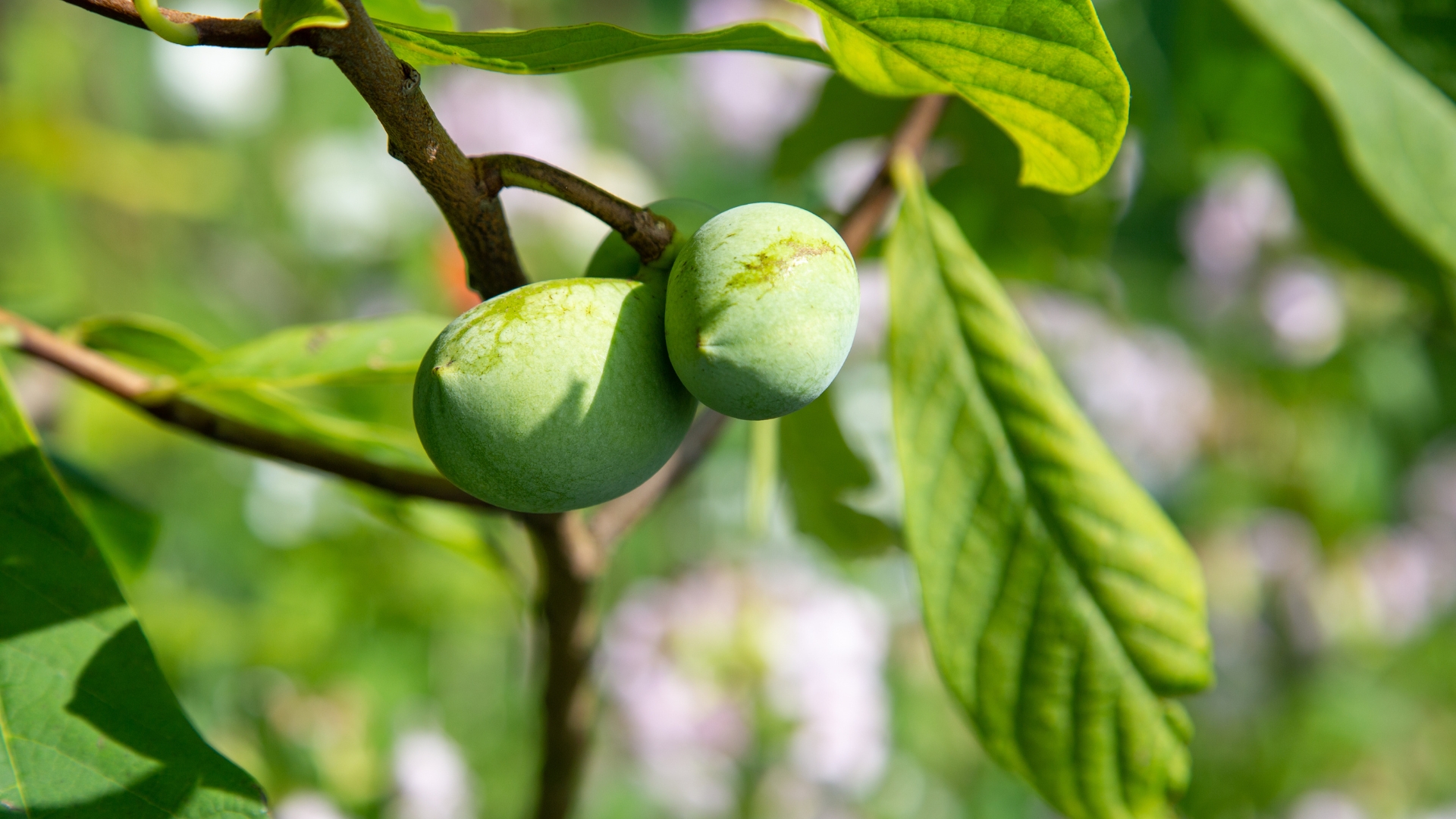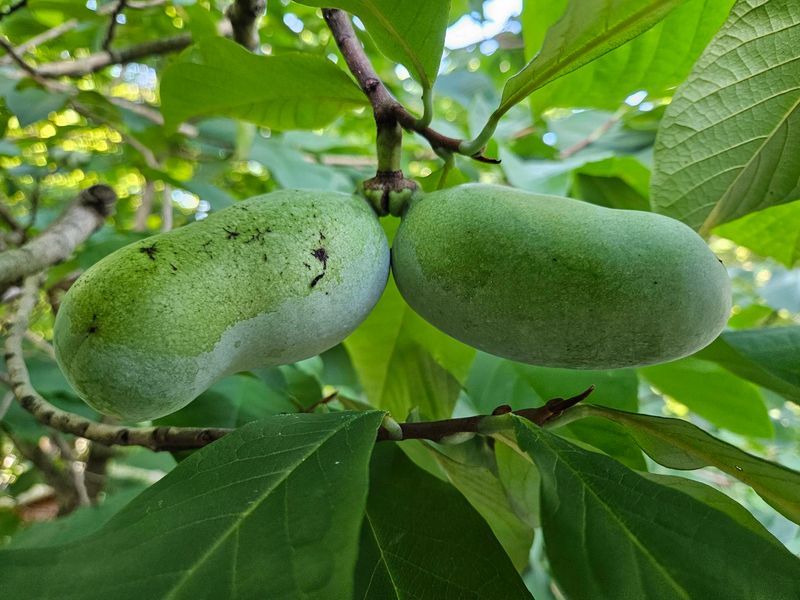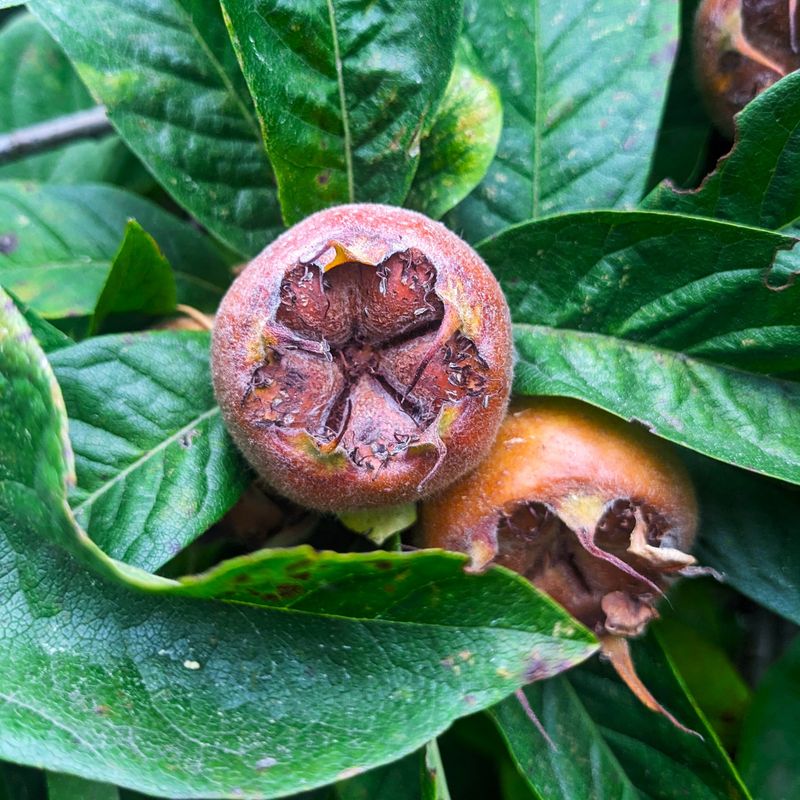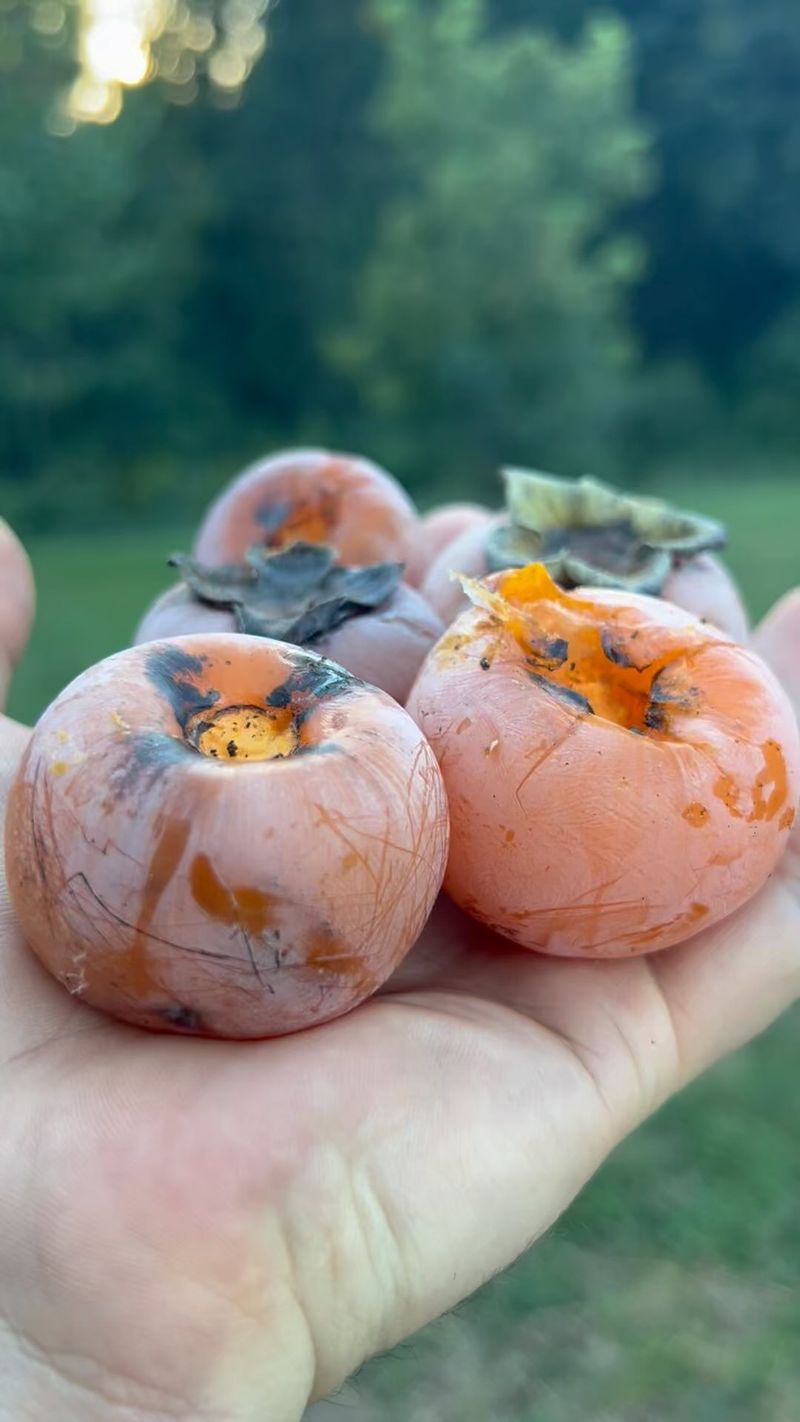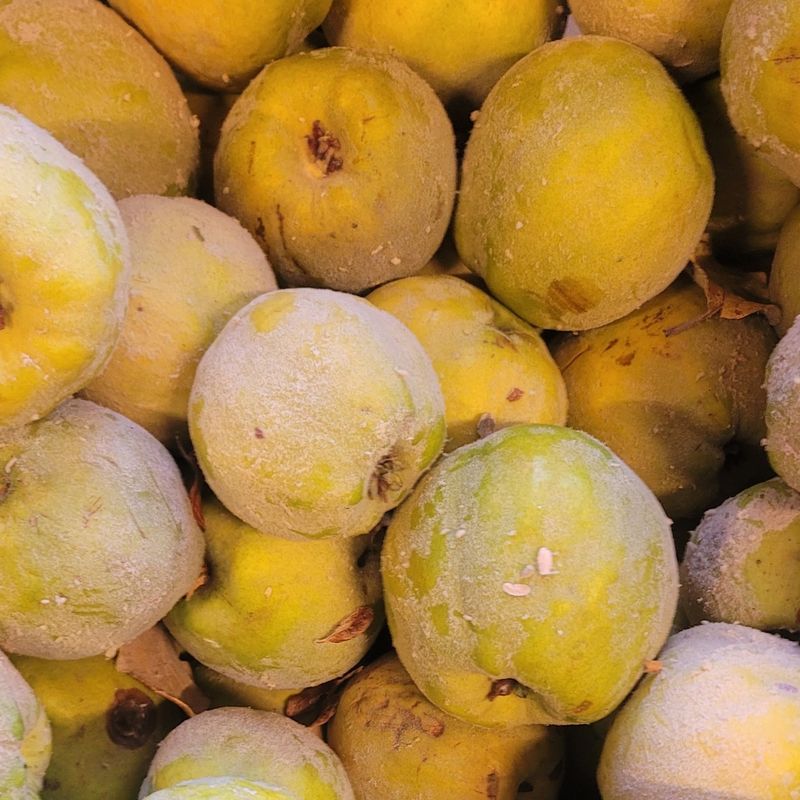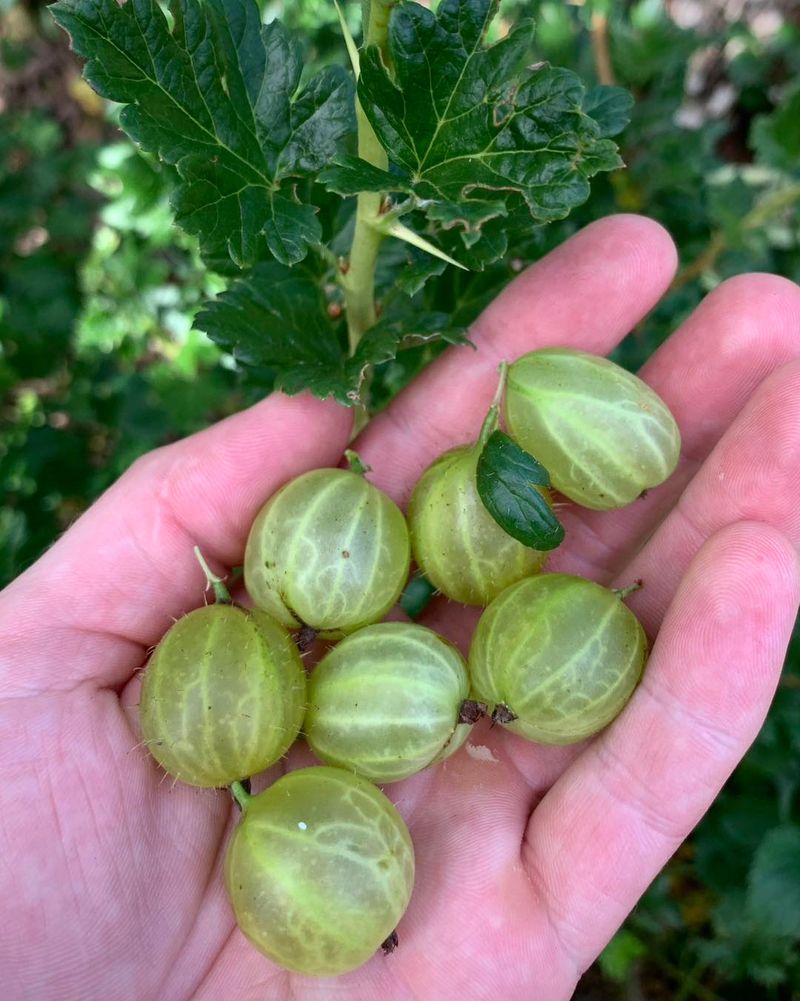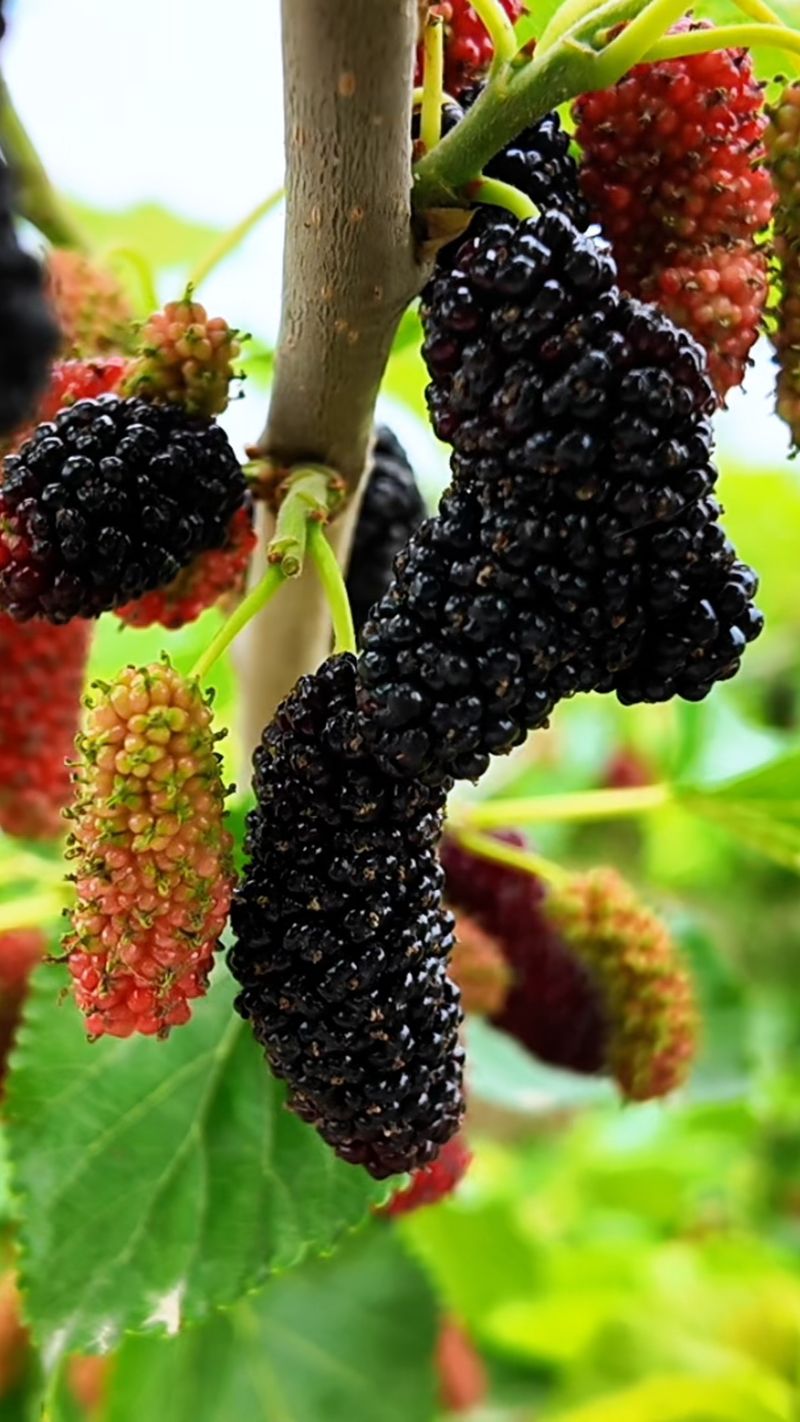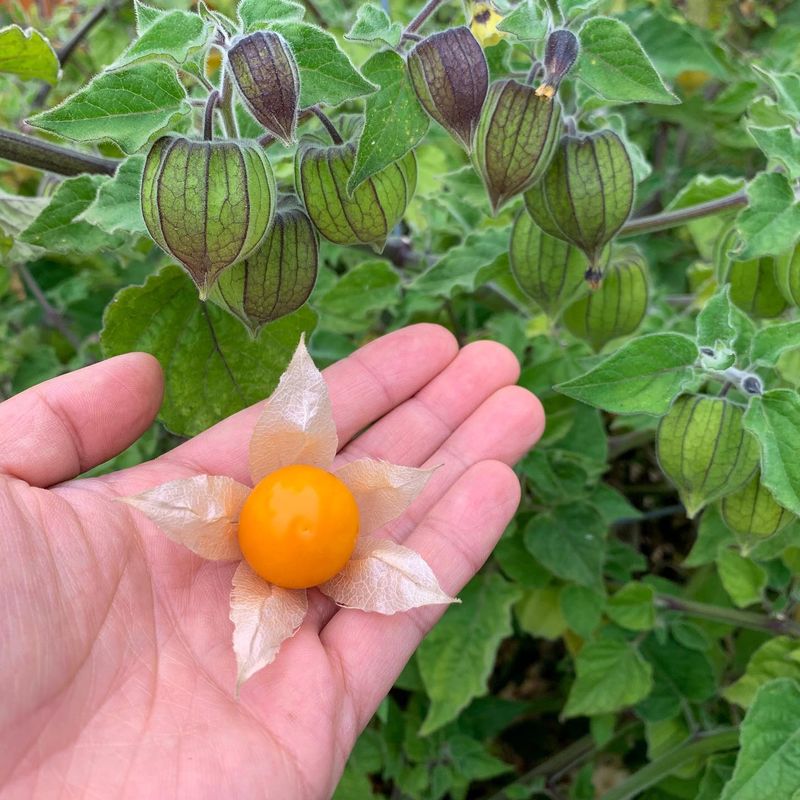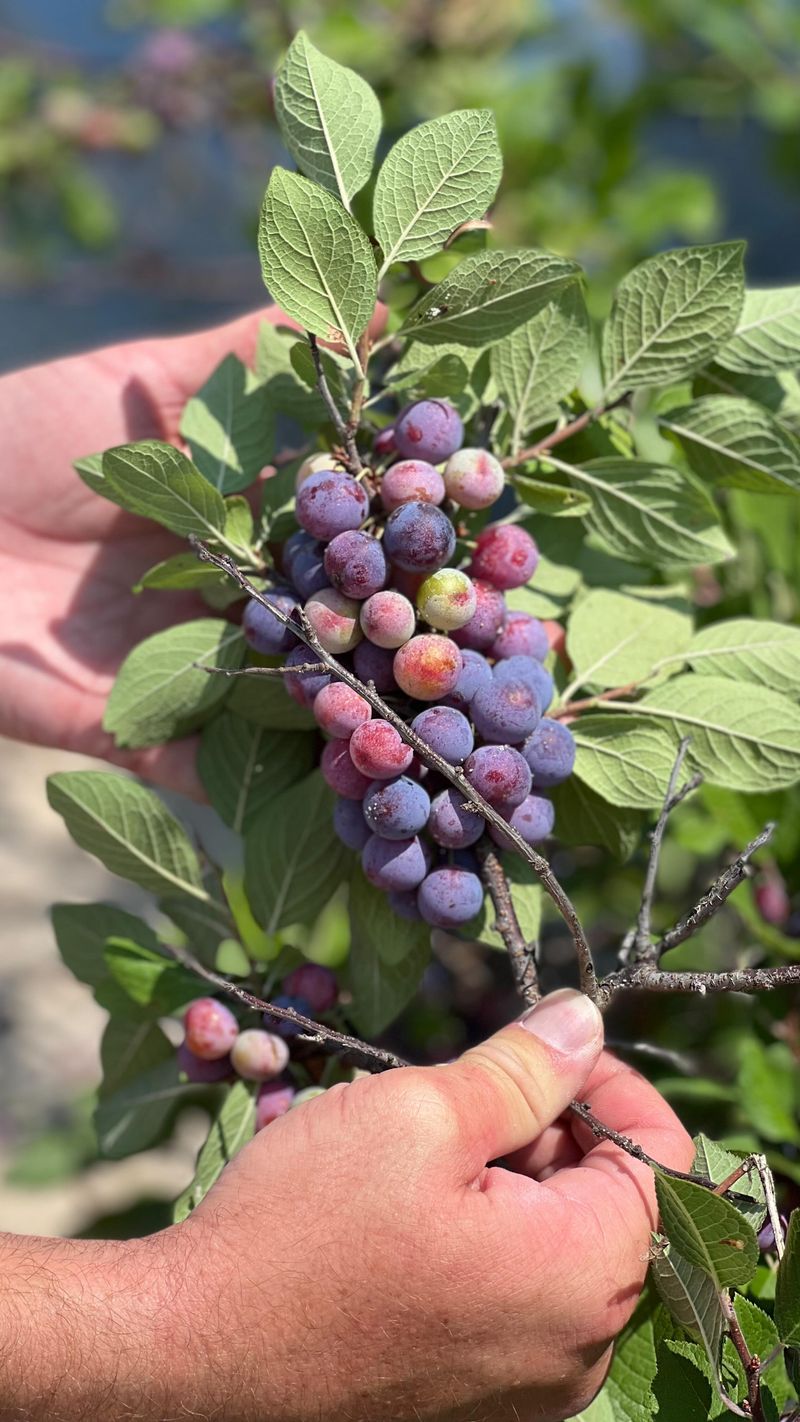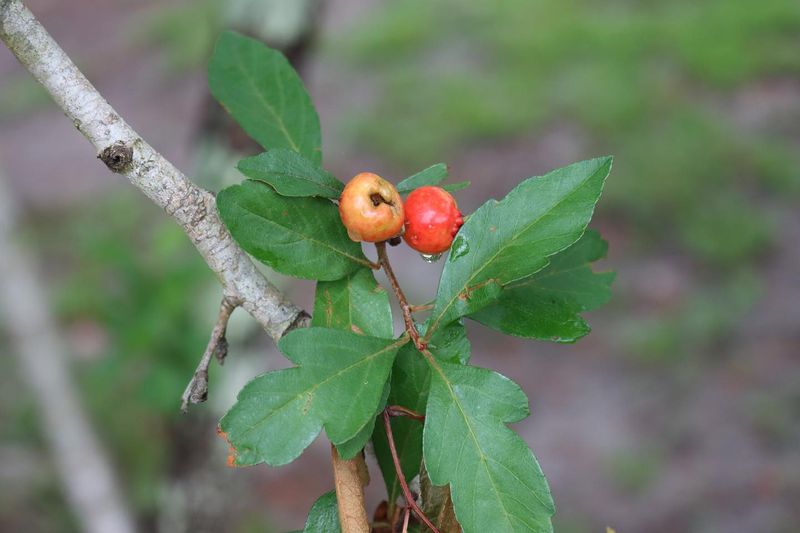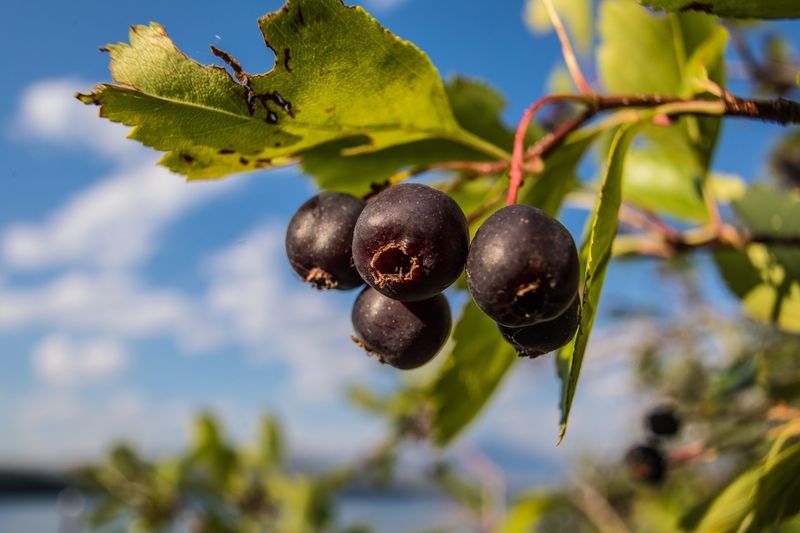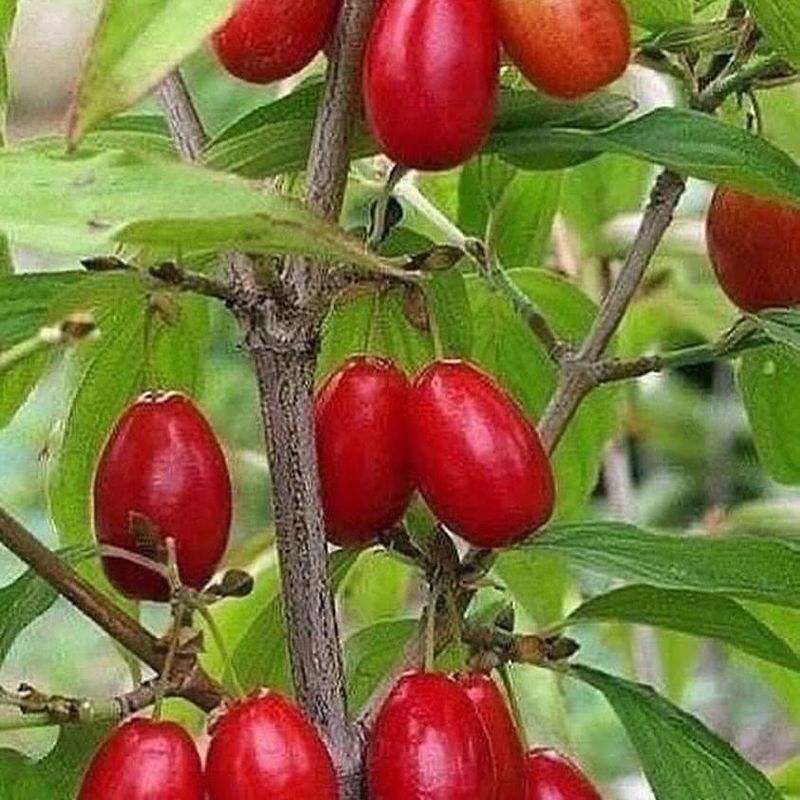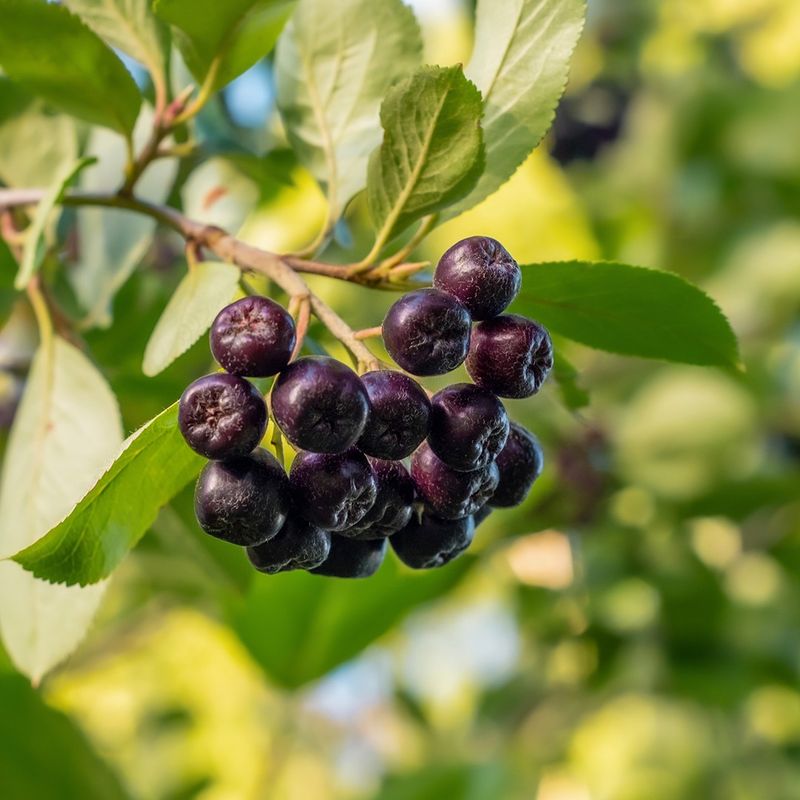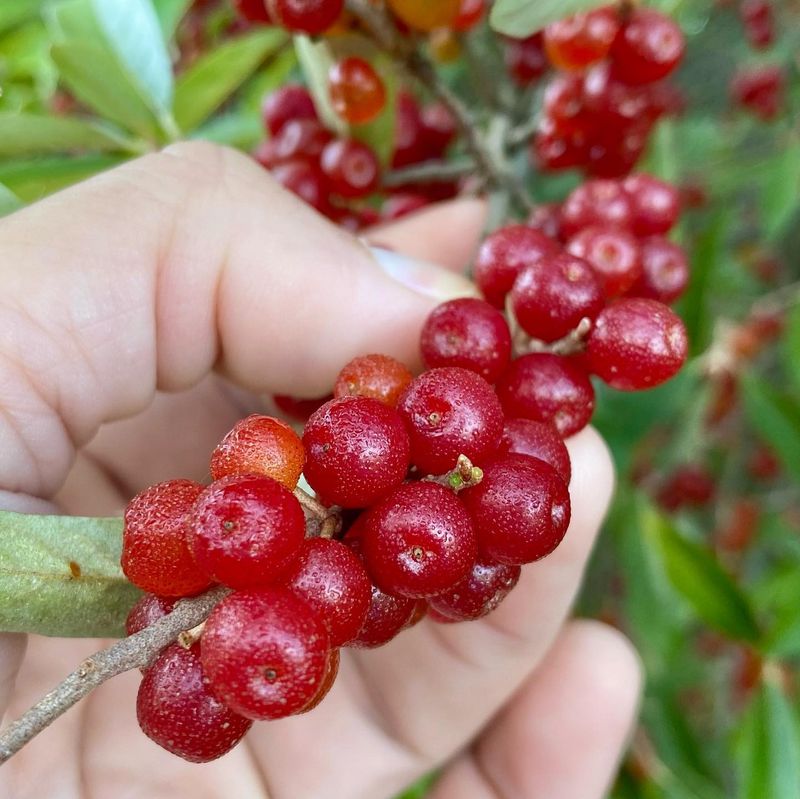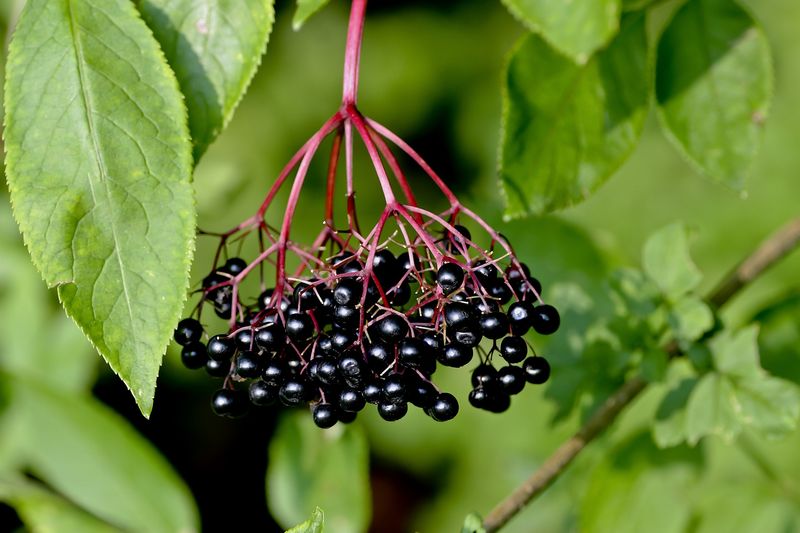Some fruits were once kitchen staples, passed down through generations—then quietly disappeared. These 15 had their moment, faded into the background, and are now making a well-deserved comeback.
I stumbled across a few at a local market and couldn’t believe how good they were. They’ve got history, flavor, and that old-school charm you just don’t get from supermarket produce.
If you’re curious about what used to fill grandma’s fruit bowl, this list is a trip worth taking.
1. Pawpaw
You might walk right past this native North American treasure without ever knowing it’s there. Pawpaws grow wild in 26 states yet remain unknown to most Americans. With custard-like flesh tasting like banana mixed with mango, they’ve earned nicknames like “Appalachian banana” and “poor man’s banana.”
Harvest season only lasts a few weeks in late summer, making these fruits precious finds at farmers markets. Their short shelf life prevented commercial success, but small-scale growers are bringing them back. Pawpaws are now appearing in craft beers, ice creams, and even high-end restaurant menus across the country.
2. Medlar
Shakespeare called them “open-arse” fruit, and that alone should make you curious. Medlars were once so beloved that medieval Europeans planted them in every garden, prizing their unique caramel-apple flavor. The odd-looking fruits must “blet” (partially rot) before eating, a process that transforms their hard flesh into something resembling apple butter.
American colonists brought medlar trees with them, but they fell from fashion by the 1900s. Today, adventurous orchardists are reintroducing these historical fruits. Chefs have rediscovered medlars for jams, chutneys, and desserts that connect modern diners with flavors our ancestors treasured centuries ago.
3. American Persimmon
Unlike their larger Japanese cousins found in supermarkets, native American persimmons pack an unforgettable flavor punch. Eating them unripe is a mistake you’ll make exactly once – the astringent tannins will turn your mouth inside out! When fully ripened by frost, they transform into sweet, date-like treats with hints of honey and spice.
Indigenous peoples dried these fruits like dates, while early settlers used them in breads and beer. The trees grow wild from Connecticut to Florida and west to Kansas. Foragers now collect them each autumn, while small farms have begun cultivating improved varieties that retain their wild complexity but offer larger fruits.
4. Quince
Your great-grandmother likely had quince paste with cheese, but this aromatic fruit disappeared from most American tables. Raw quinces are rock-hard and astringent, but something magical happens when cooked – they turn ruby-red and develop a fragrant, tropical flavor somewhere between apple and pineapple.
Colonial American cookbooks featured quince in everything from preserves to pies. The fruits contain high levels of pectin, making them perfect for jellies. Today, small orchards are replanting quince trees, and chefs are rediscovering their transformative properties in both sweet and savory dishes, especially in Mediterranean and Middle Eastern recipes.
5. Gooseberry
Grandma’s gooseberry pie became an endangered species when these tart berries vanished from American gardens. Their disappearance wasn’t just changing tastes – a federal ban on growing them lasted decades because they can spread a disease harmful to pine trees. The restrictions have since relaxed, allowing their comeback.
Green, red, or golden varieties offer flavors ranging from grape-like to tropical. Their natural pectin makes them perfect for jams without added thickeners. Craft brewers now use gooseberries in sour beers, while pastry chefs prize their balance of sweetness and acidity in desserts that wake up your taste buds after a heavy meal.
6. Mulberry
Kids with purple-stained hands and faces once gave away the location of neighborhood mulberry trees. These sweet berries grow on trees rather than bushes and were once common in American yards. Cities later banned them as “messy” when the fruits dropped and stained sidewalks.
Wild mulberries come in white, red, and the most common black varieties. Their flavor resembles blackberries with a hint of vanilla. Foragers now seek out these forgotten trees, and some innovative farmers have begun cultivating improved varieties. The berries freeze beautifully and make exceptional wines, jams, and syrups with antioxidant levels that exceed most commercial fruits.
7. Ground Cherry
Looking like tiny paper lanterns hiding golden treasures, ground cherries are making a comeback in gardens nationwide. These husked fruits aren’t cherries at all but relatives of tomatillos, offering a surprising flavor that combines pineapple, vanilla, and tomato. They fall to the ground when perfectly ripe – hence their name.
Native Americans gathered wild varieties, while European settlers grew them in kitchen gardens. Their natural sugars make them perfect for preserves and pies. Modern chefs showcase them in both sweet and savory dishes. Small-scale farmers now sell them at markets, where customers willing to unwrap the papery husks discover a fruit that tastes nothing like anything else in the produce aisle.
8. Beach Plum
Native to sandy coastal areas from Maine to Maryland, these small purple plums were once essential to East Coast cooking. Beach plum jelly was as common in coastal homes as cranberry sauce at Thanksgiving. The shrubs grow wild in dunes, producing fruit that’s too tart for fresh eating but transforms into exceptional preserves.
Harvesting became a cherished family tradition each August and September. As coastal development reduced wild populations, beach plums nearly disappeared from American tables. Conservation efforts now protect wild stands, while small farms have begun cultivating them inland. Their intense flavor and beautiful purple color make beach plum products sought-after souvenirs in coastal communities.
9. Mayhaw
Southern grandmothers would wade into swamps each spring to collect these small red berries that grow on hawthorn trees. Mayhaw jelly was liquid ruby – a sweet-tart delicacy served at special breakfasts throughout the South. The fruits ripen in May (hence the name) and traditionally required boats or waders to harvest from flooded bottomlands.
Modern drainage and development reduced wild populations, but farmers now grow improved varieties in orchards. The berries contain more pectin than apples, making perfect jellies without additives. Annual mayhaw festivals celebrate this heritage fruit across Louisiana, Texas and Georgia. Their complex flavor – like apple crossed with cranberry – is finding new fans in cocktails and gourmet preserves.
10. Serviceberry
Known by many names – juneberry, saskatoon, shadbush – these berries grow on small trees native to every U.S. state except Hawaii. Indigenous communities harvested them for millennia, while settlers relied on their early ripening as the first fresh fruit after winter. Their blueberry-like taste carries almond notes from their apple-family genetics.
Many American towns still have serviceberry trees planted as ornamentals, with residents unaware the purple fruits are edible. Urban foraging groups now organize serviceberry picking events in city parks. Chefs value their complex flavor in everything from pies to sauces for game meats. Their high antioxidant content rivals cultivated berries, adding nutritional appeal to their rediscovery.
11. Passionflower Fruit
Those stunning purple flowers growing wild across the South hide a secret – edible fruits called maypops. Native passionfruits are smaller than tropical varieties but pack intense flavor into their gelatinous seed pods. Indigenous Americans ate them fresh and dried, while early settlers added them to preserves.
The vines grow wild from Pennsylvania to Florida and west to Illinois and Texas. Unlike commercial passionfruits, these native varieties survive winter temperatures as low as -20°F. Their tart-sweet pulp tastes like tropical punch with floral notes. Foragers now collect them for syrups and jams, while some southern nurseries offer cultivated varieties with larger fruits for home gardens.
12. Cornelian Cherry
These ruby-red fruits aren’t cherries at all but a type of dogwood native to Europe and Asia. Early American settlers brought them to their farms, valuing them for both ornamental beauty and culinary uses. The tart fruits resemble elongated cherries and ripen in late summer when their astringency transforms into a complex sweet-sour flavor.
Cornel cherries were once common in American orchards but vanished as commercial fruits dominated markets. Their revival began in landscaping, where the early-blooming yellow flowers attracted gardeners. Many homeowners remain unaware the beautiful red fruits are edible. Their high pectin content makes them exceptional for preserves, while Eastern European traditions showcase them in syrups, liqueurs, and even savory sauces.
13. Aronia Berry
Native Americans used these dark berries for food and medicine, but they nearly disappeared from American diets. Also called chokeberries (not to be confused with chokecherries), their astringent quality makes them challenging for fresh eating but perfect for processing. Their incredible antioxidant content exceeds blueberries, pomegranates, and almost all other fruits.
European countries actually maintained aronia cultivation while Americans forgot them. Now they’re returning as a superfood crop, with farms establishing orchards nationwide. The deep purple juice makes stunning jellies, wines, and syrups. Their natural compounds show promise for fighting inflammation and supporting heart health, giving these forgotten natives new relevance in health-conscious markets.
14. Autumn Olive
Sometimes the most interesting fruits come with complicated stories. Autumn olives were introduced from Asia for erosion control, only to become invasive across much of America. The silver-leafed shrubs produce abundant red berries with distinctive silver speckles and a flavor like cranberry mixed with sweet cherry.
Foragers now harvest these berries as a form of ecological management. Despite their invasive status, the fruits contain 17 times more lycopene than tomatoes, making them nutritional powerhouses. Their tart-sweet profile works beautifully in jams and fruit leathers. Some entrepreneurs have created businesses harvesting the berries from wild stands, transforming an ecological problem into a sustainable food source.
15. Elderberry
Your grandmother probably knew elderberry syrup as medicine for colds and flu. These native berries grow across North America and were vital to Indigenous pharmacopeias and food systems. The dark purple clusters require cooking to remove mild toxins, developing a rich, complex flavor often described as “blackberry meets blueberry with wine notes.”
Commercial elderberry products disappeared during the pharmaceutical age but have returned with renewed interest in natural remedies. Research confirming their immune-boosting properties sparked a revival. Small farms now cultivate improved varieties with larger berries. Beyond traditional syrups and wines, elderberries appear in modern products from gummies to kombucha, reconnecting Americans with a forgotten native superfood.

